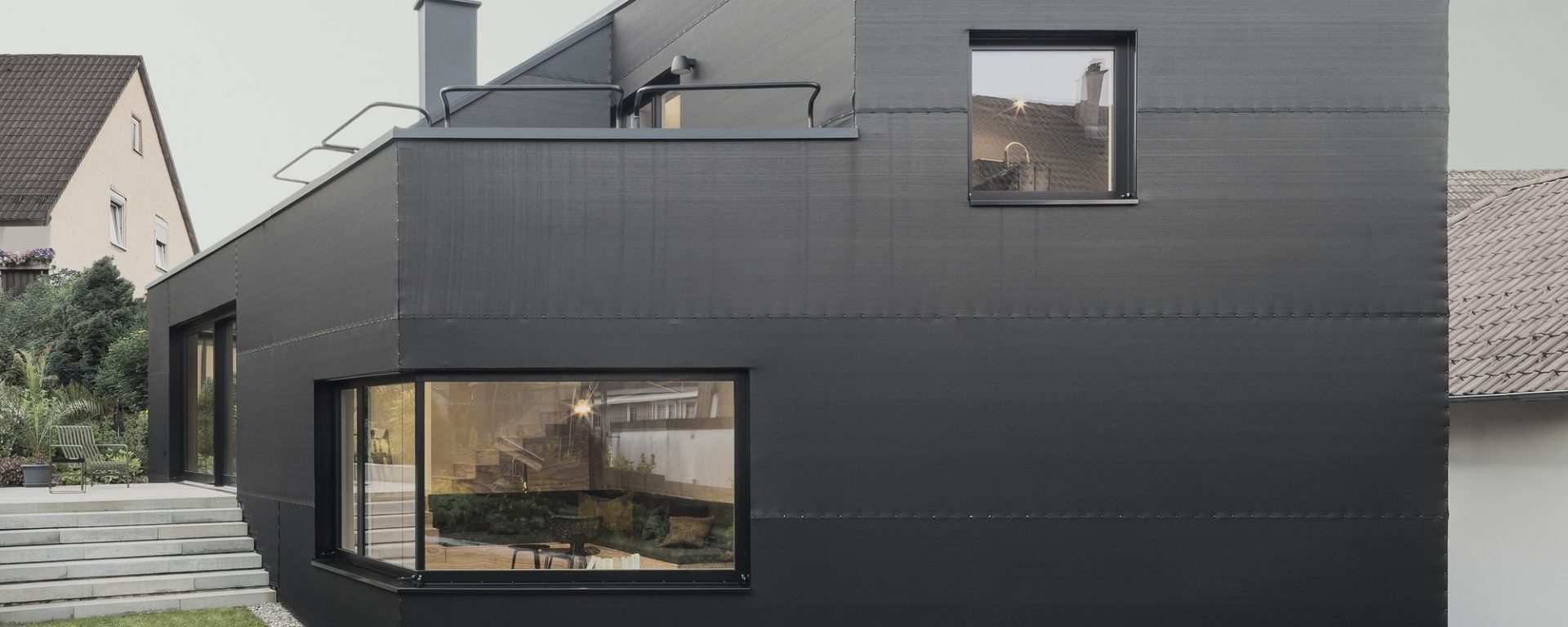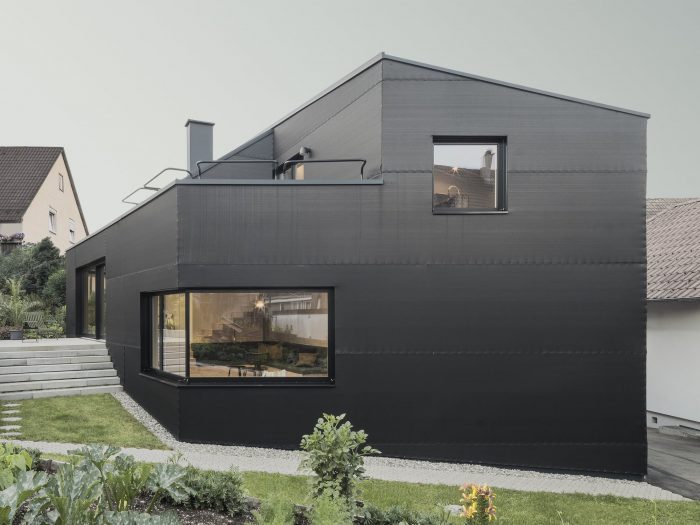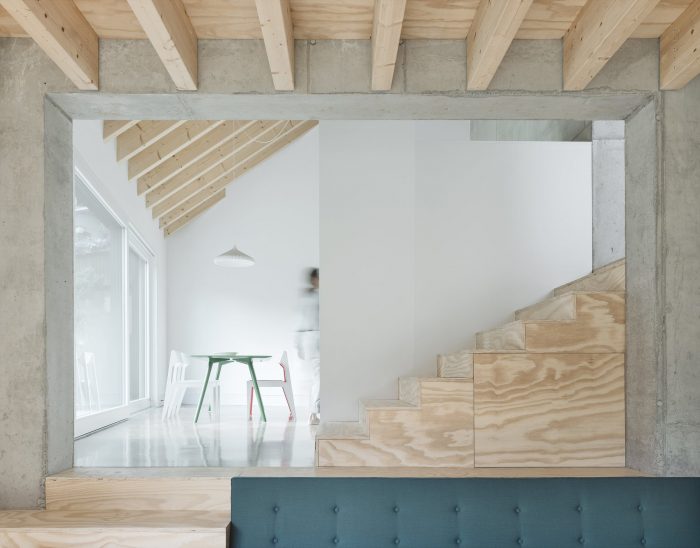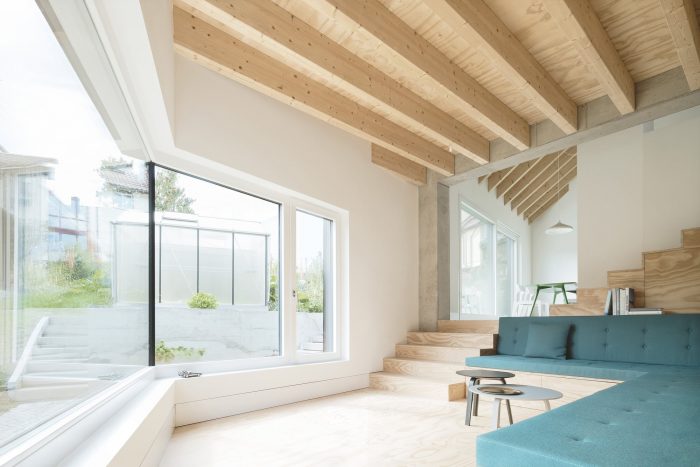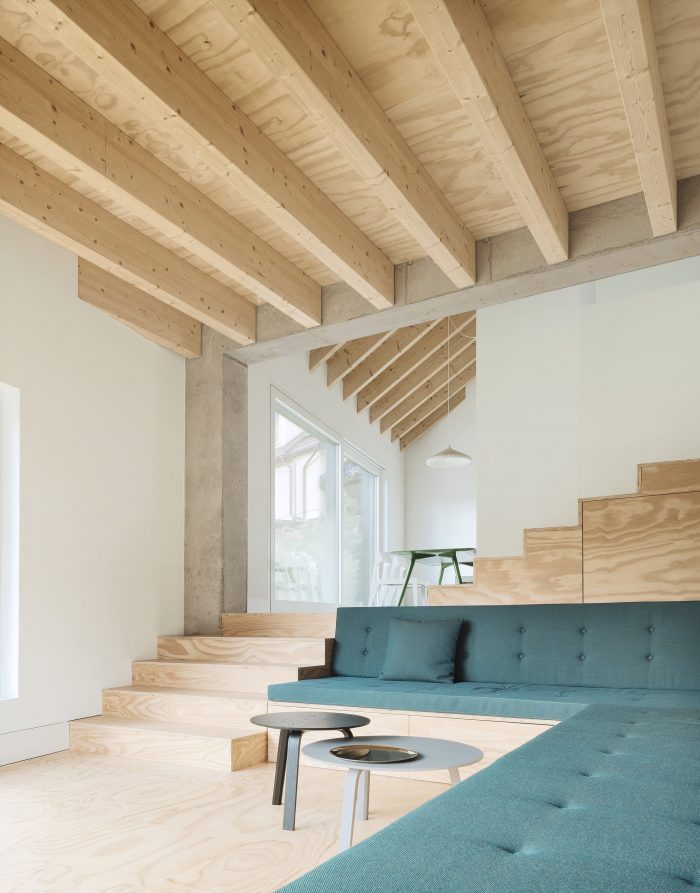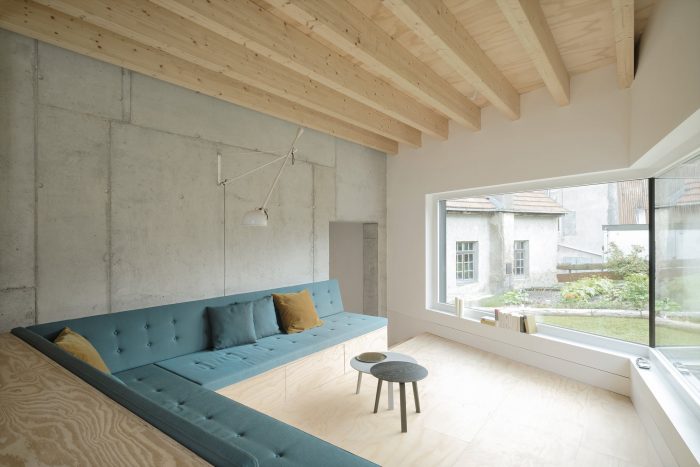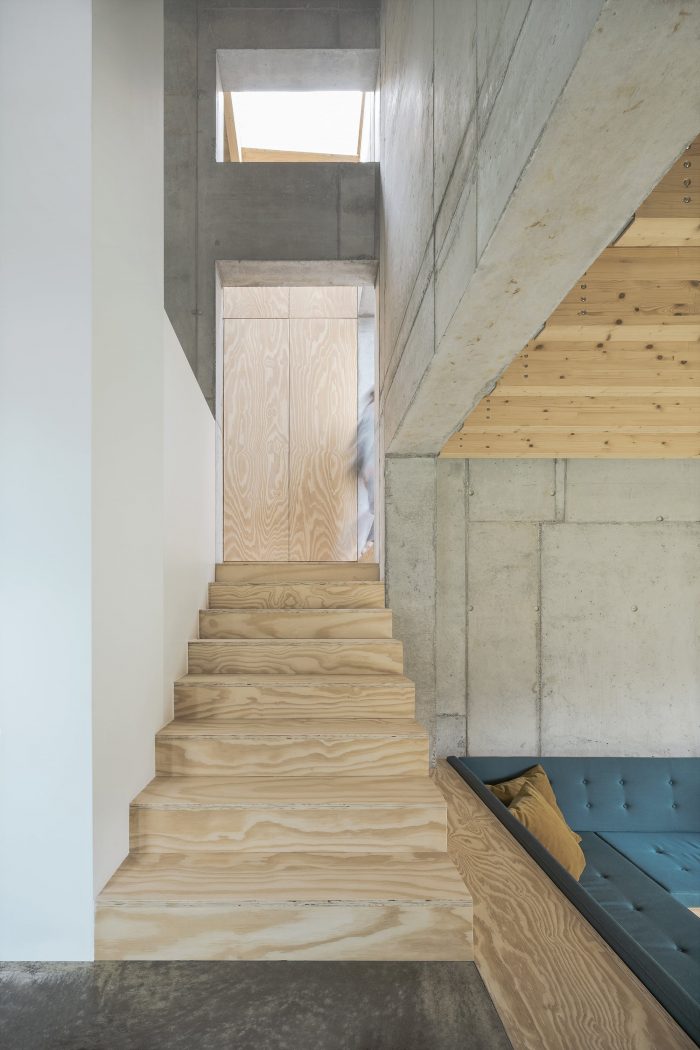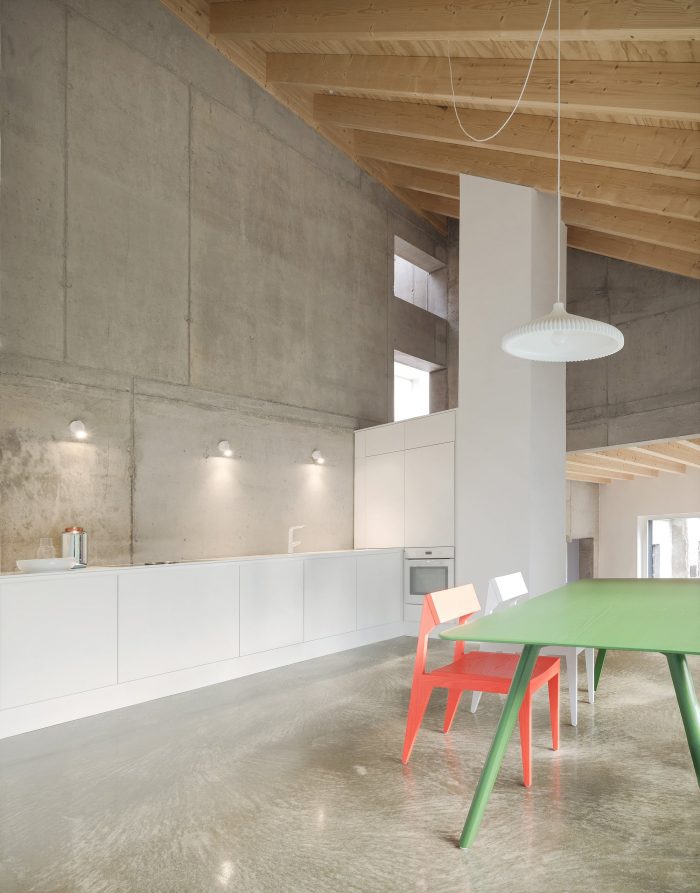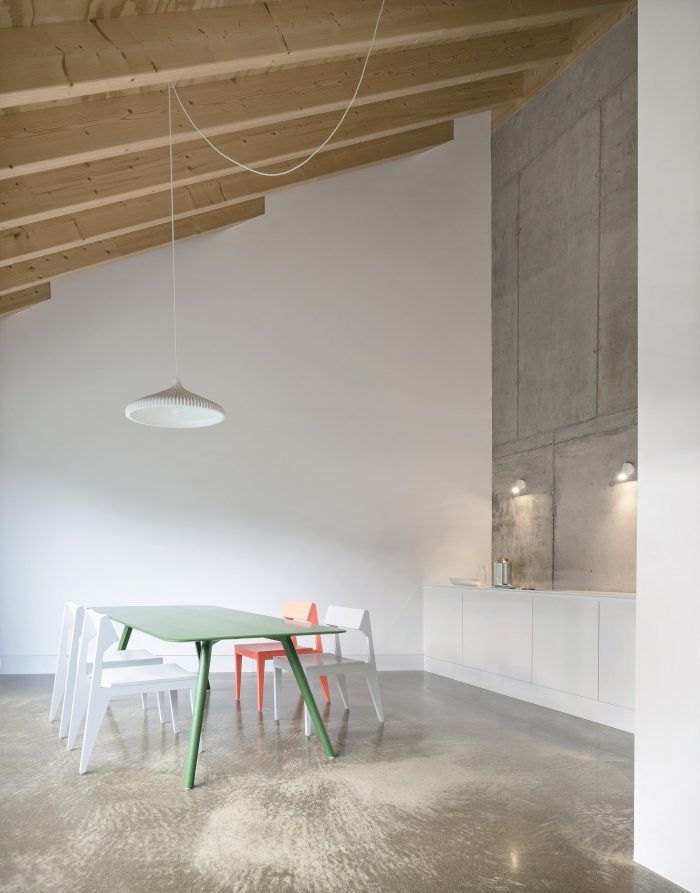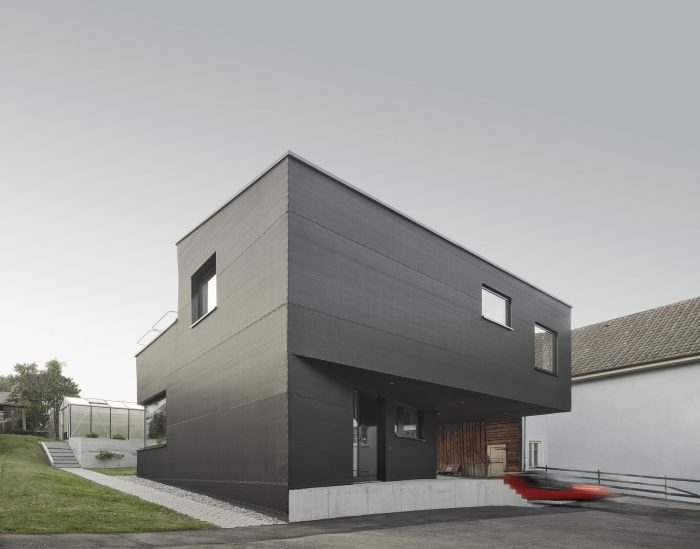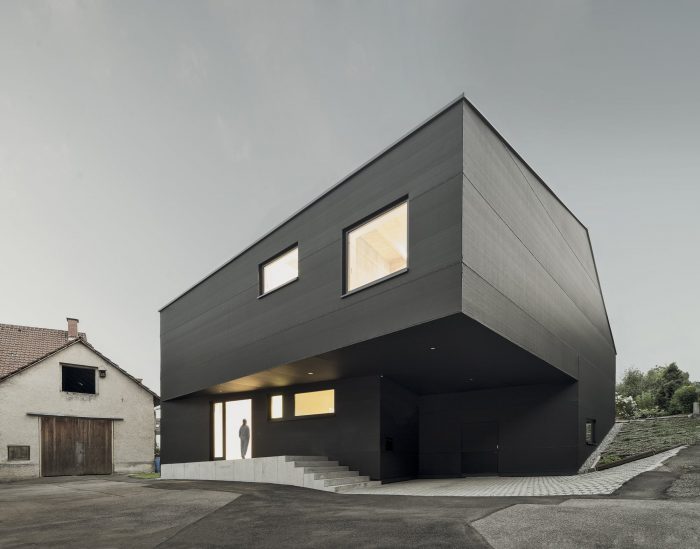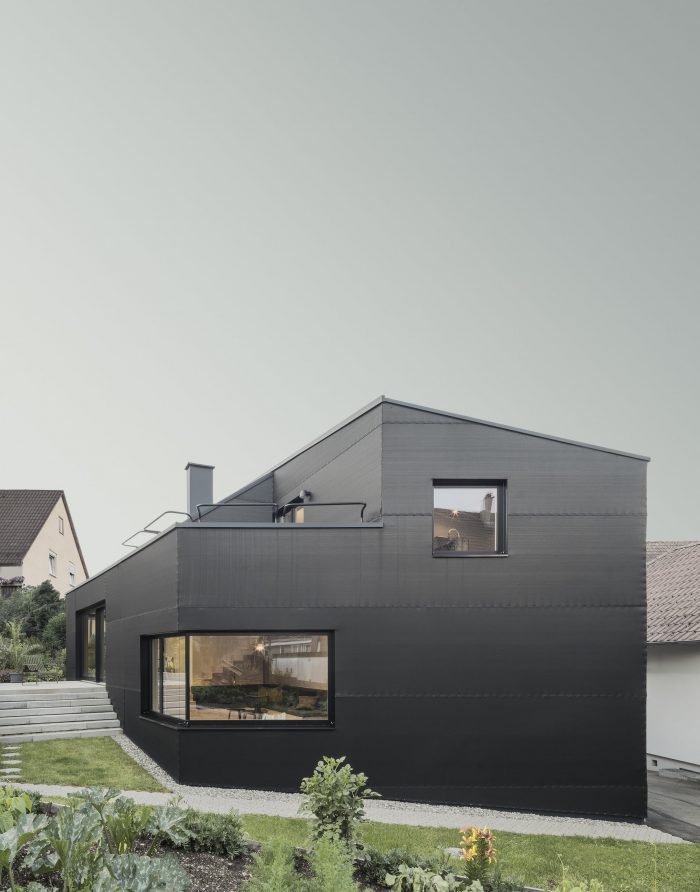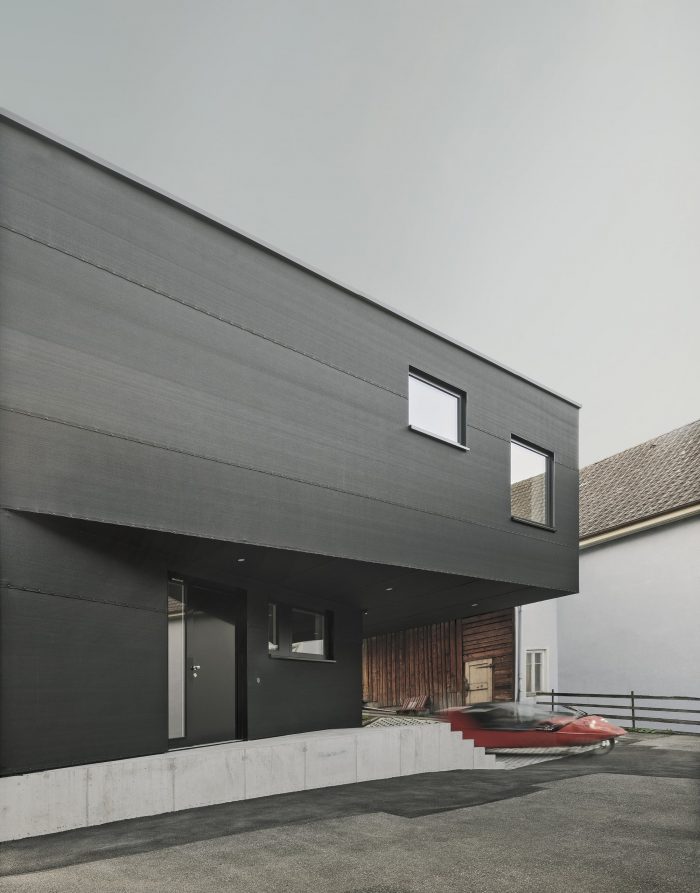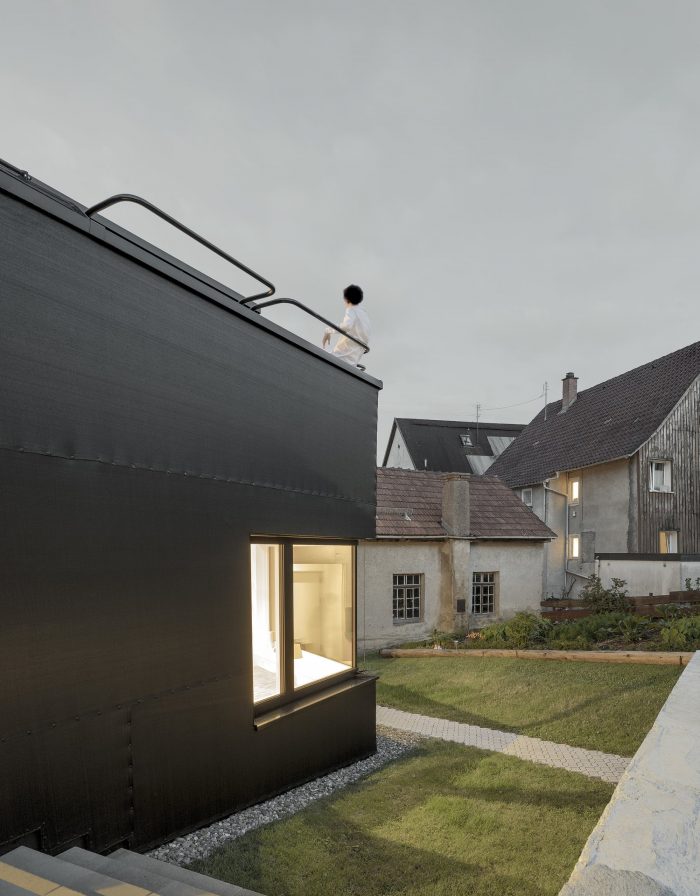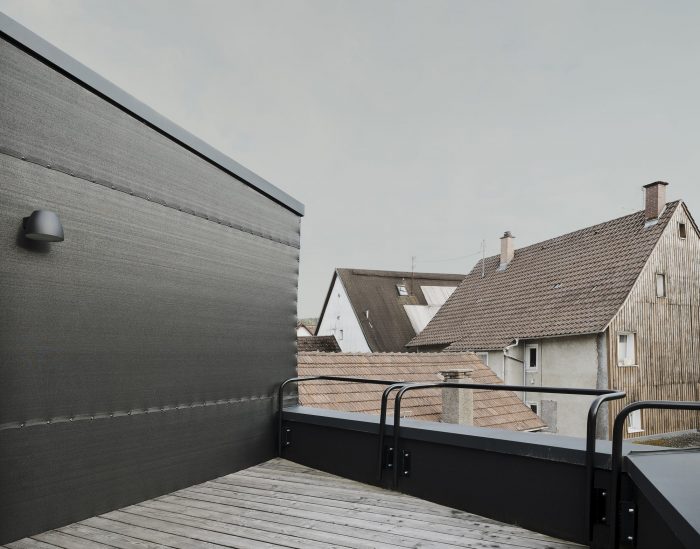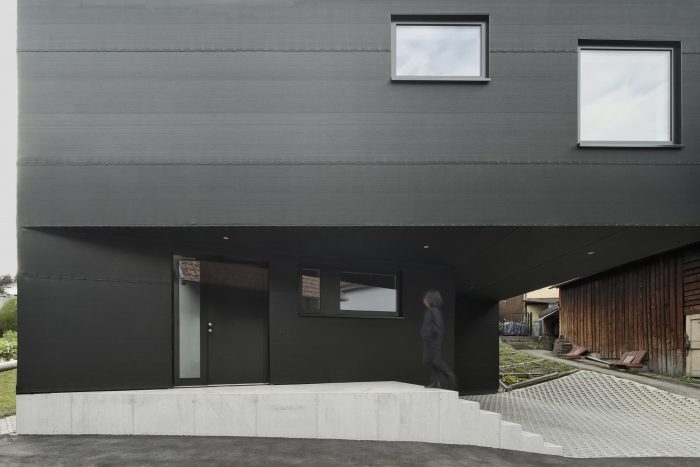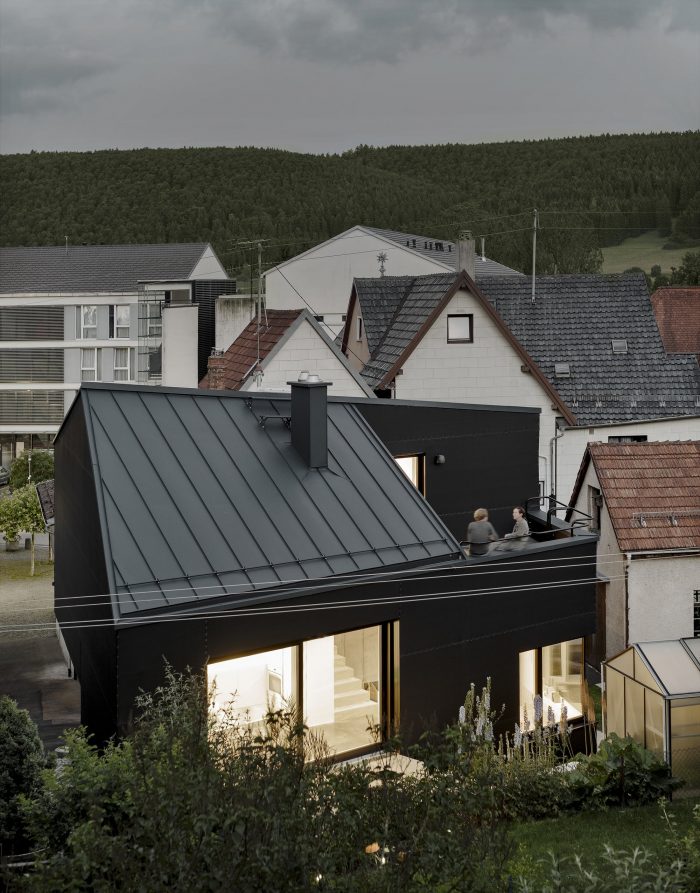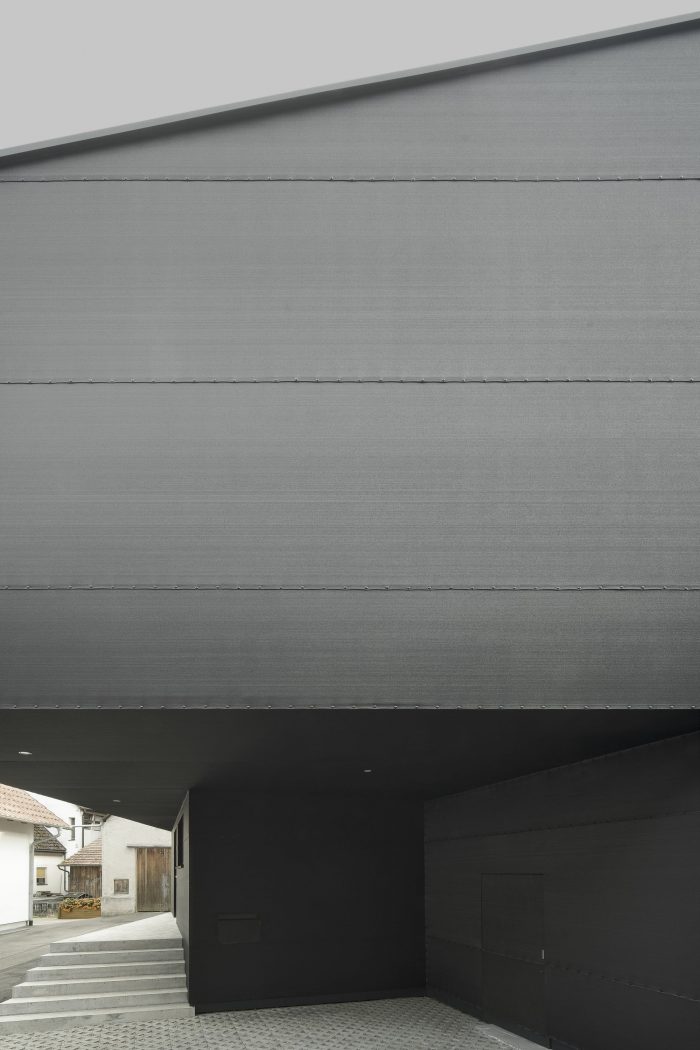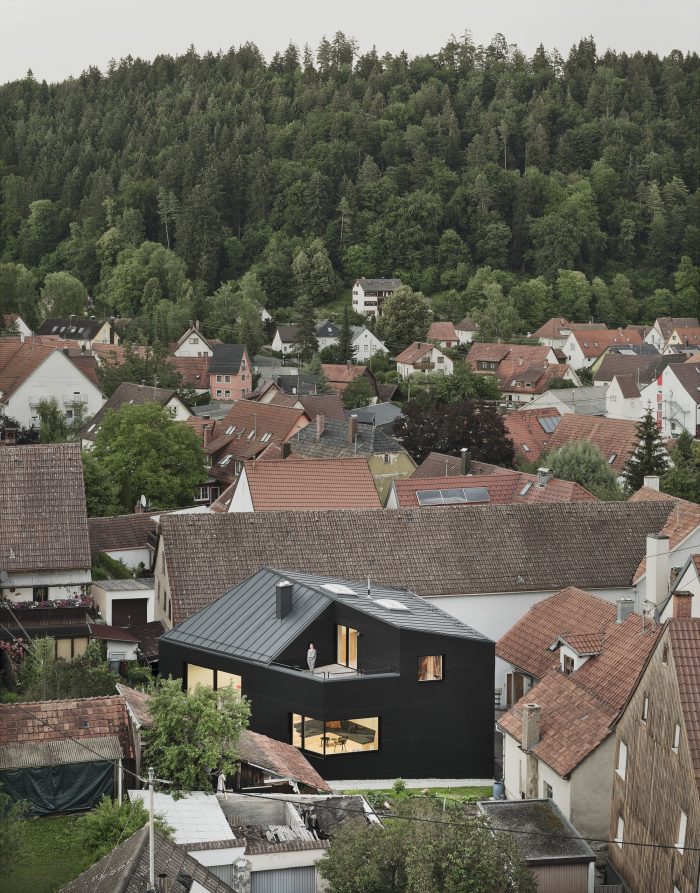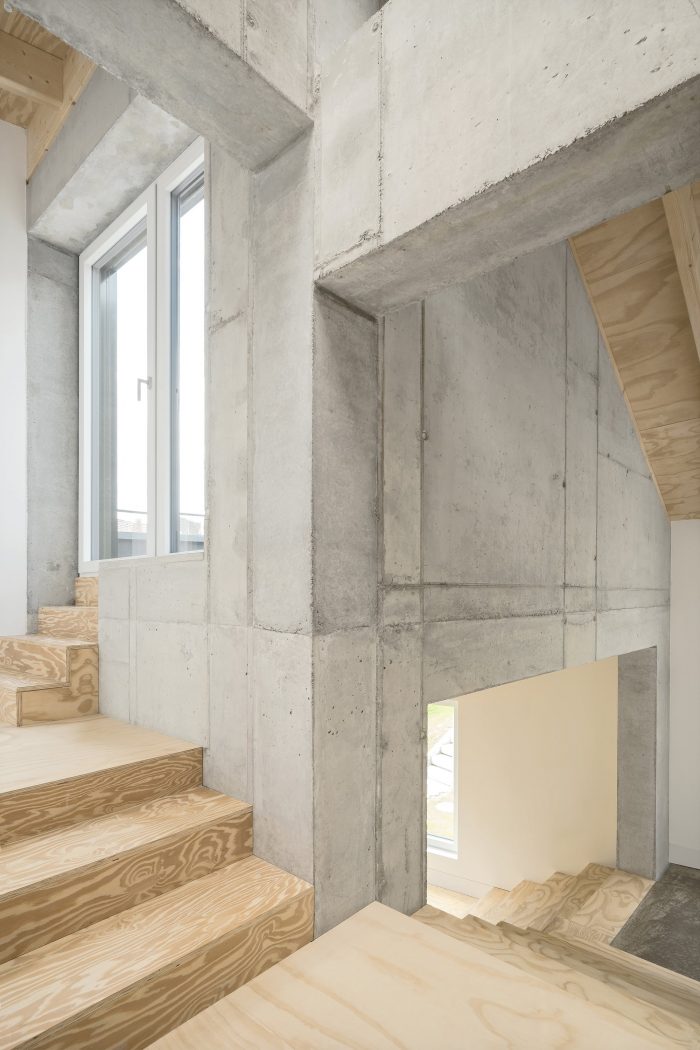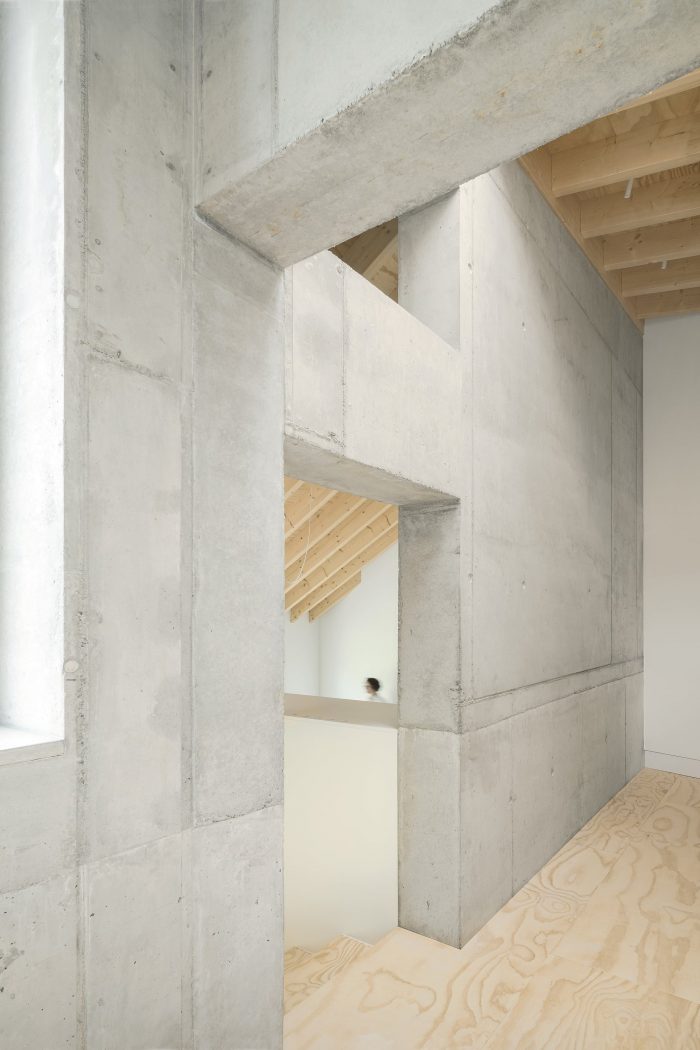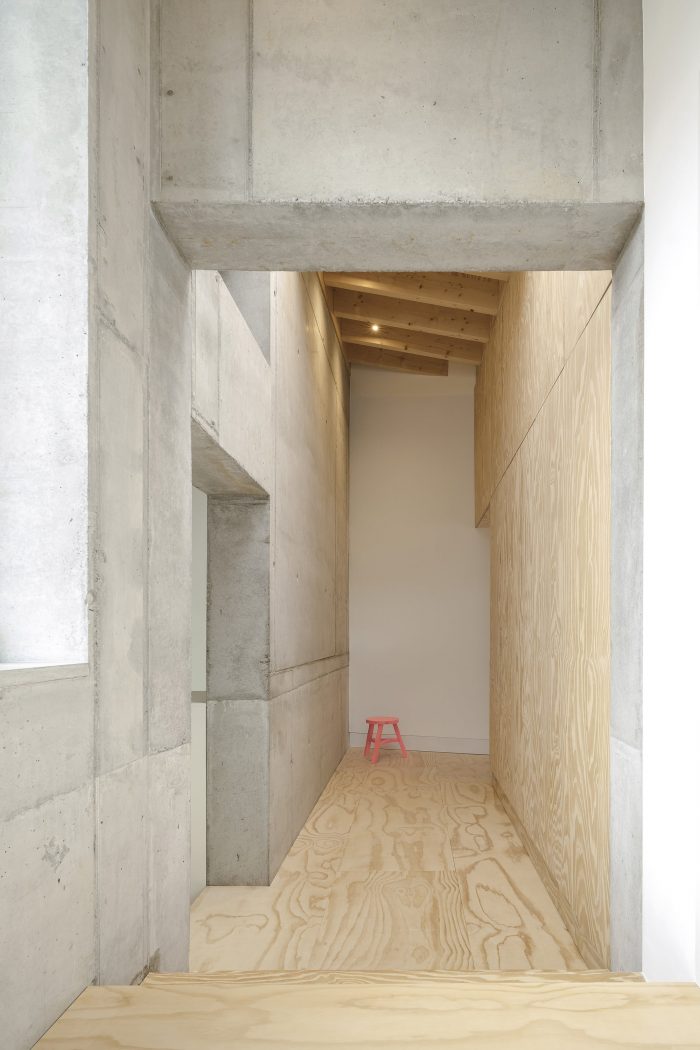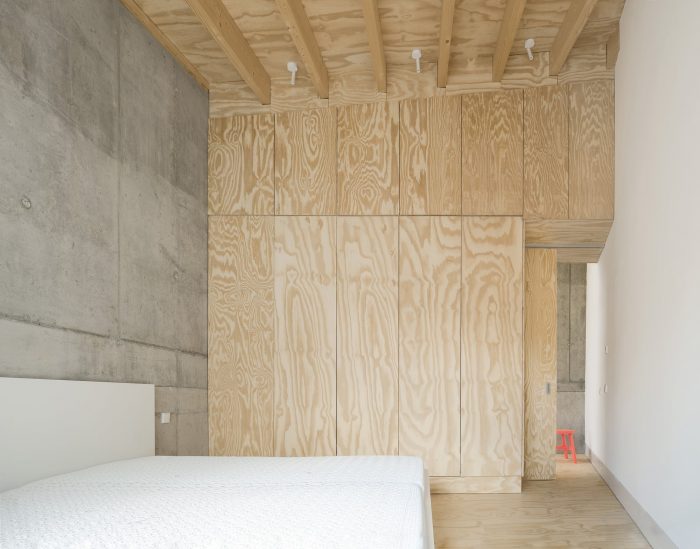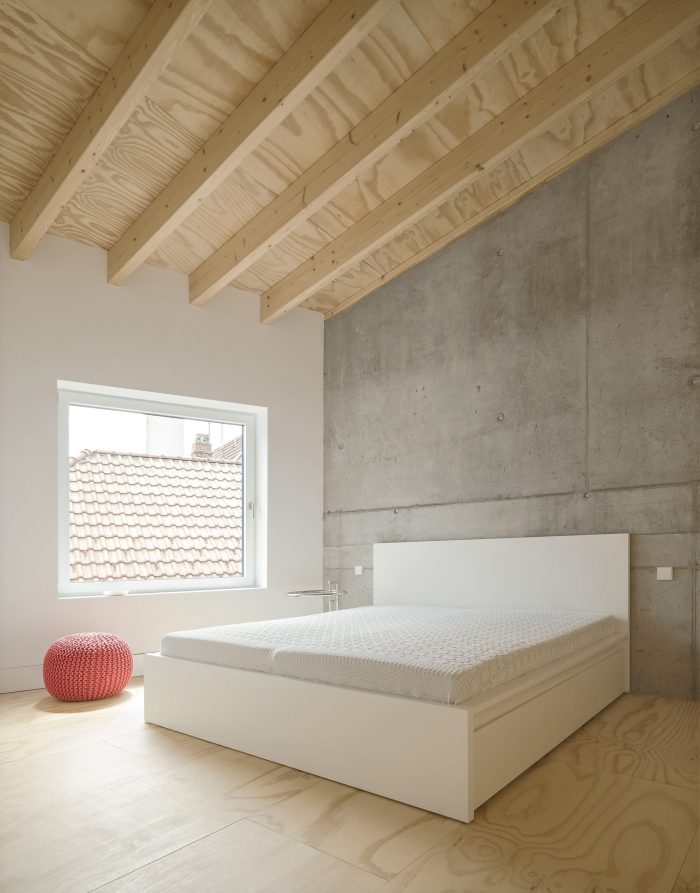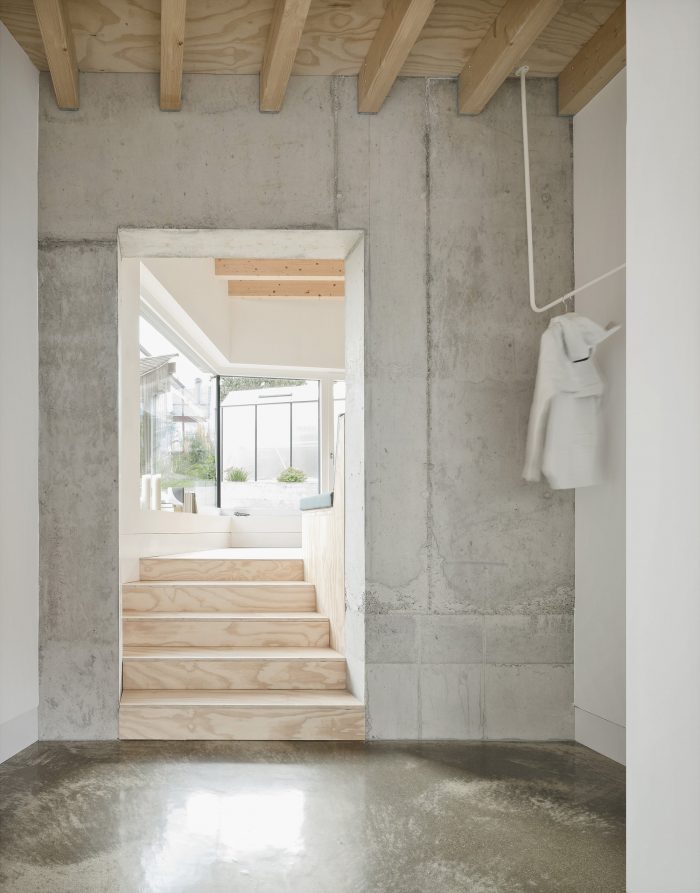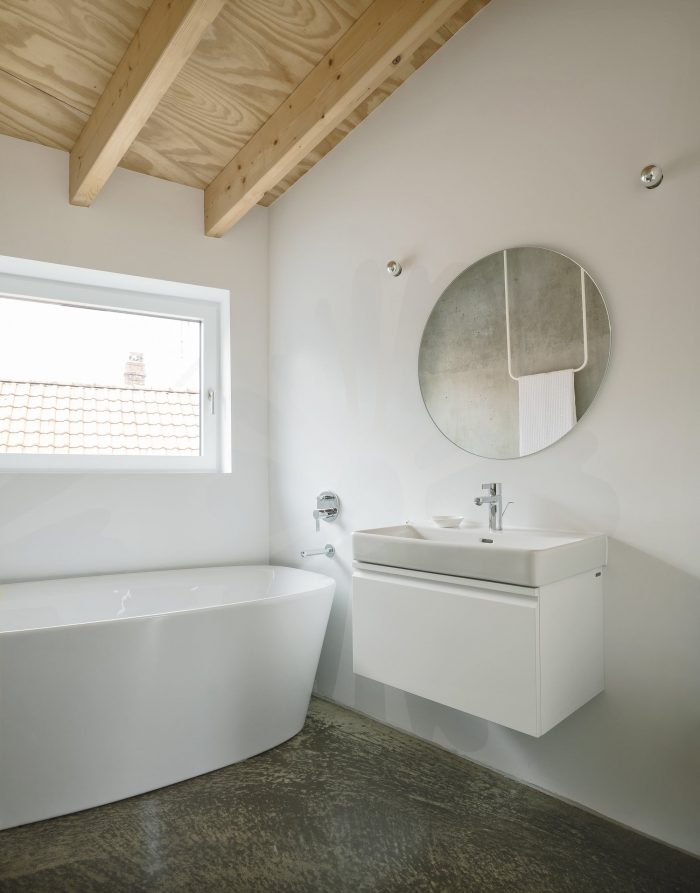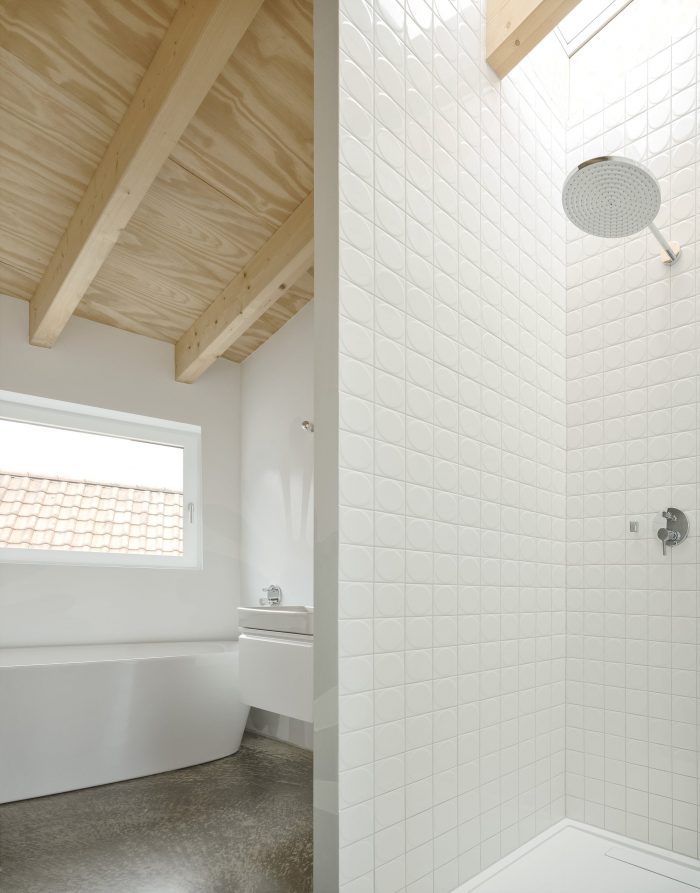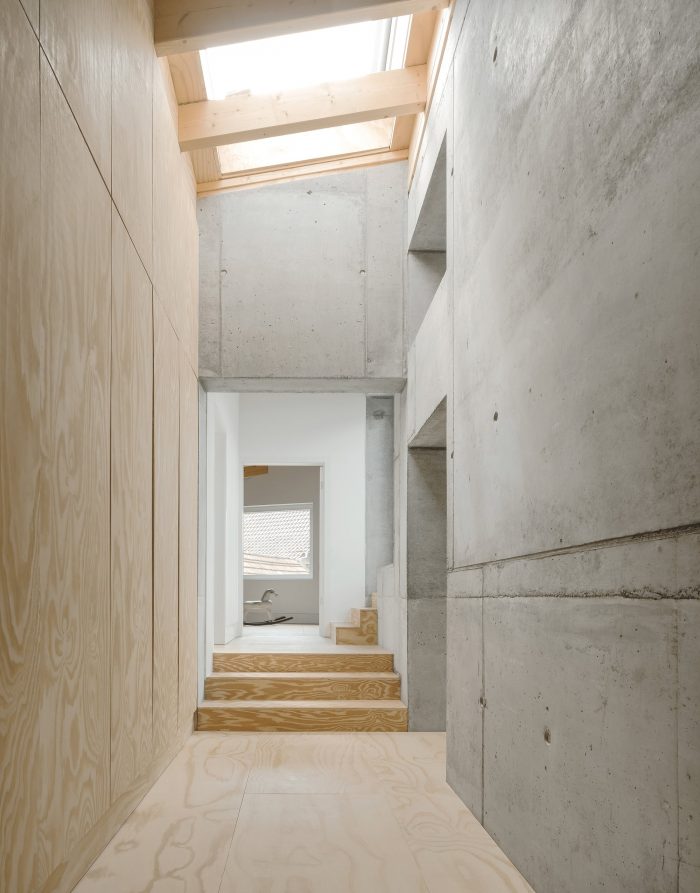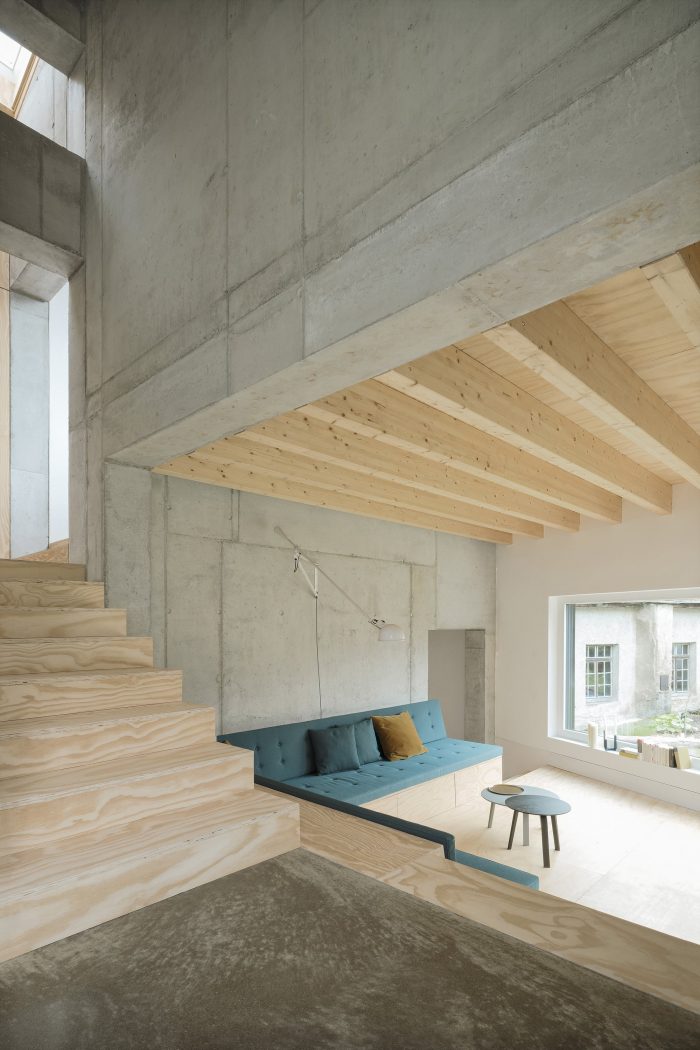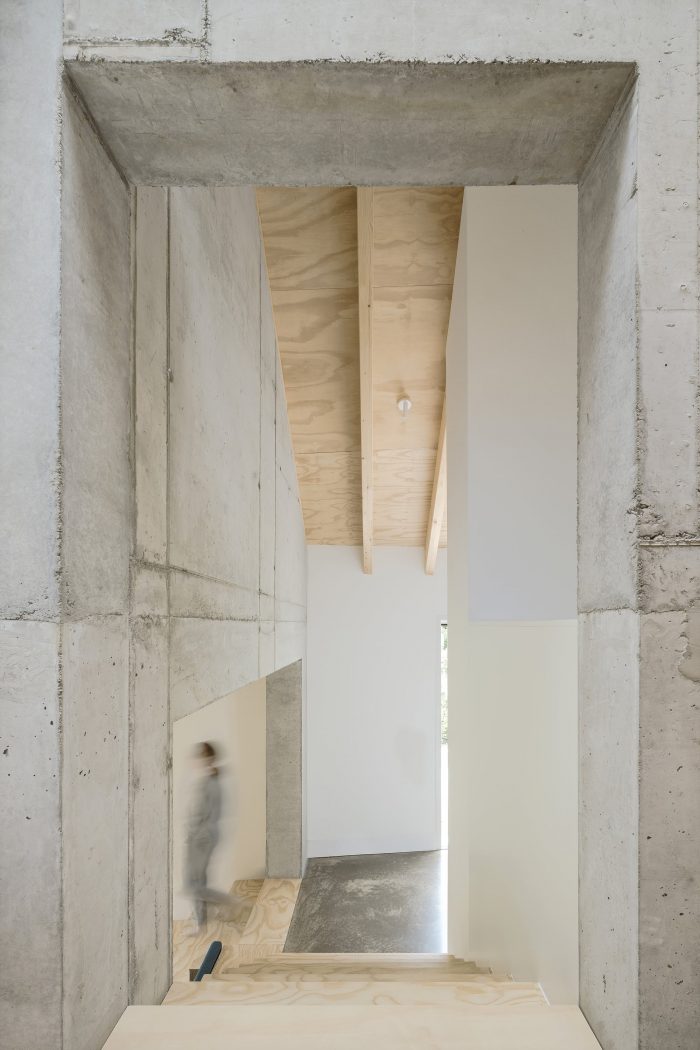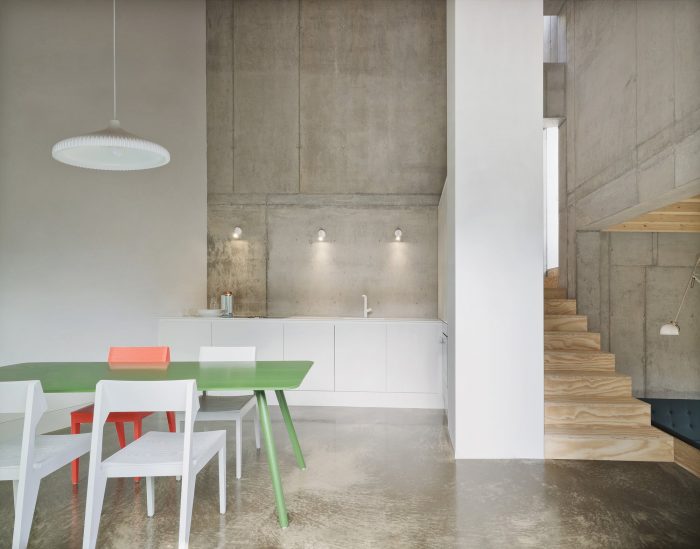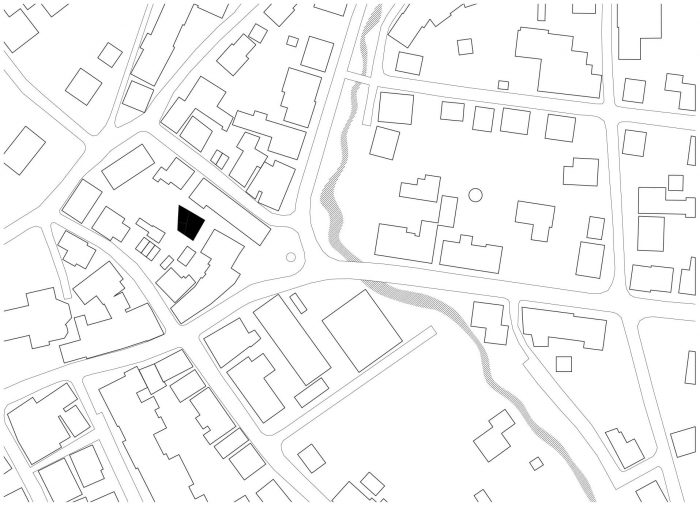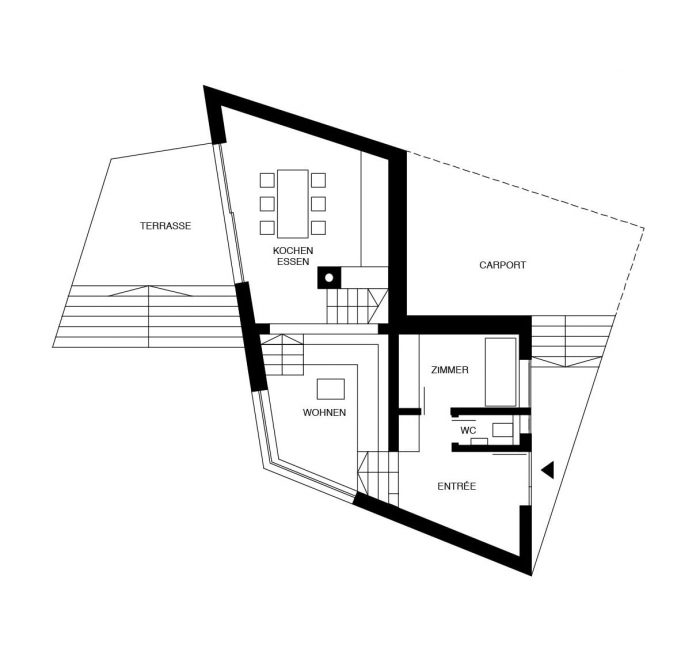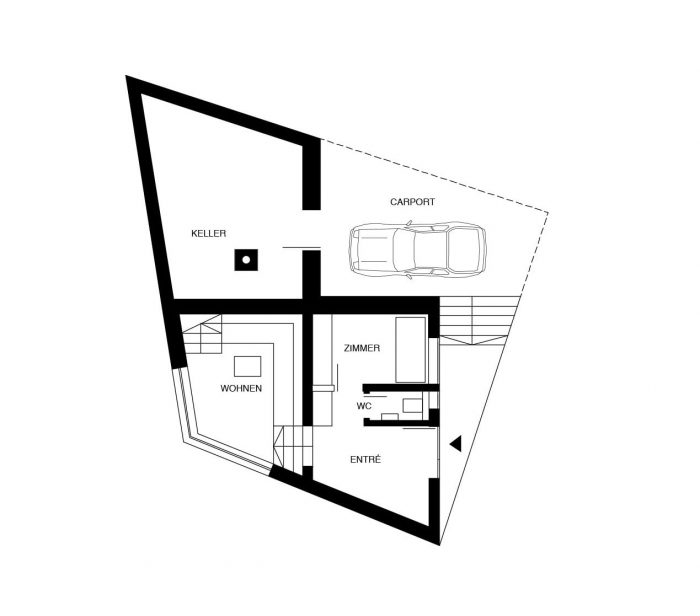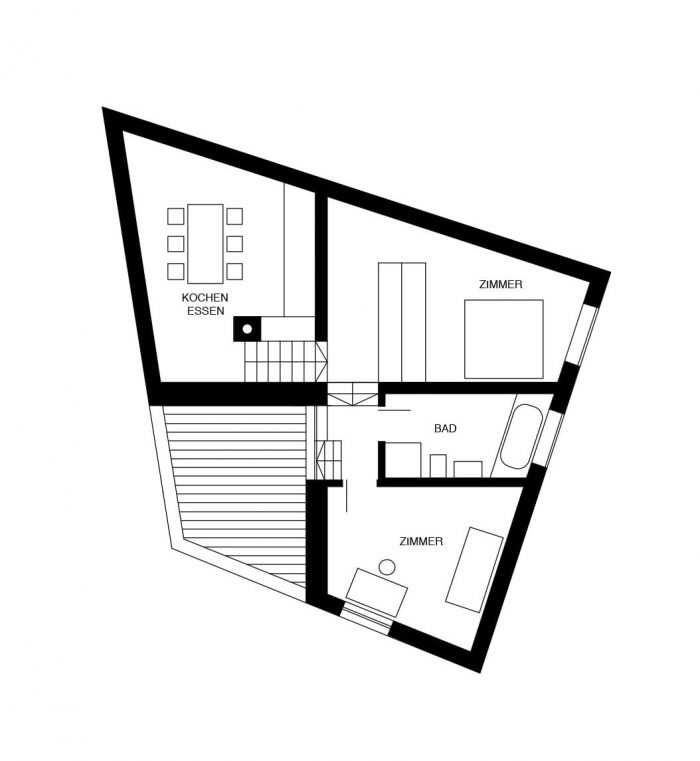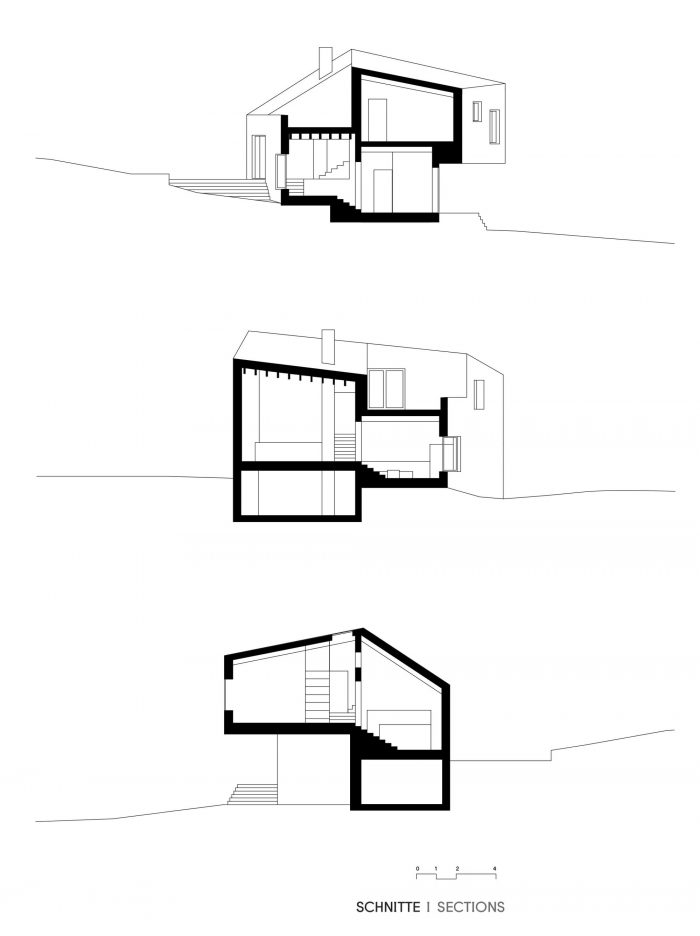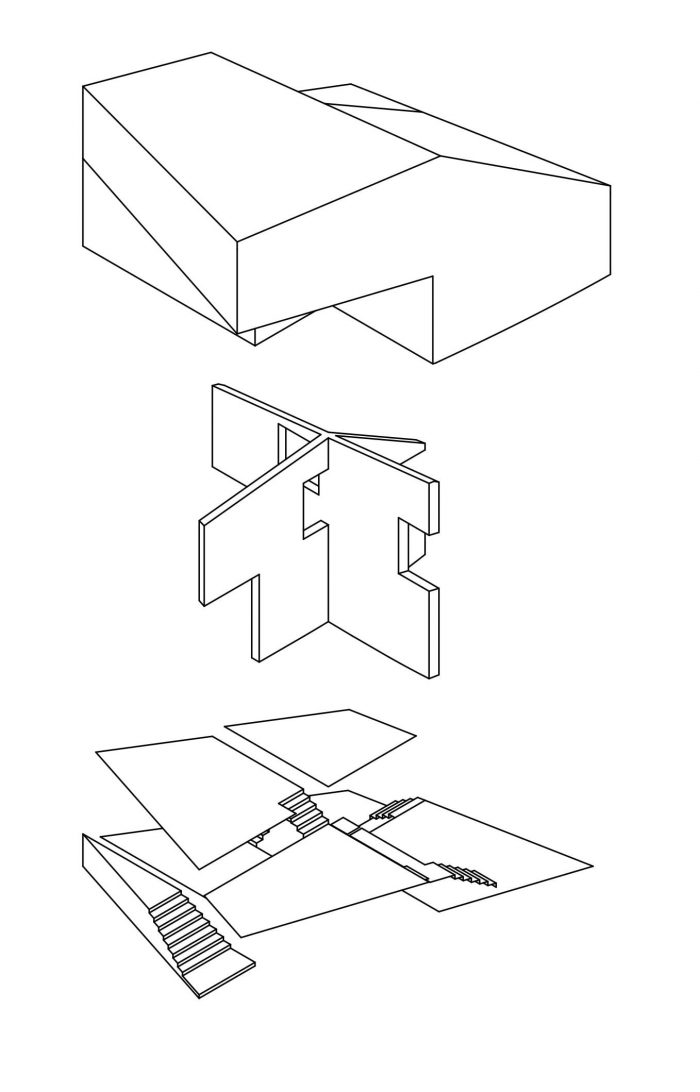“Haus D “占据了图特林根市郊区一个风景优美的中心地带的一小块土地。它被紧紧地夹在过去几个世纪建造的传统建筑之间,乍一看,这个地方似乎根本不适合建造新的建筑。然而,Haus D矗立在这里,其结构根据太阳的位置进行调整,其形状由相邻的建筑和它们之间的距离决定。从东到西,Haus D的地面高度相差三米。这种地形条件推动了项目的概念设计。在其东侧,Haus D有两个内部楼层,一个前院和一个外部驱动器。在西侧,它容纳了一个内部故事和一个带有外部花园的后院。
“Haus D” occupies a small site at the center of a scenic suburb of the city of Tuttlingen. Wedged tightly in between traditional buildings constructed over the last few centuries, at first glance, the property did not seem suitable for new construction at all. Nevertheless, Haus D stands here, its structure adjusted to the position of the sun, its shape determined by adjacent structures and the distances in between them. From east to west, the ground level of Haus D differs by three meters. This topographical condition drove the project’s conceptual design. On its east side, Haus D features two interior stories, a front yard and an exterior drive. On the west side, it accommodates one interior story and a back yard with an exterior garden.
房子的内部也是对场地条件的回应。两块直立的混凝土板,以十字架的形式排列,将生活区分为四个部分。房间围绕这个结构,从下到上顺时针旋转。这一特点使人们可以在房子里进行真正的往返旅行。从入口处的一个高大的混凝土平台开始,人们来到客厅、餐厅、二楼的主卧室,最后来到屋顶露台,在这里可以看到城市西南方向的壮丽景色。
The house’s interior also responds to the site’s conditions. Two upright concrete slabs, arranged in the form of a cross, divide the living area into four segments. The rooms spiral around this structure, clockwise from bottom to top. This feature allows a literal round trip through the house. From an exalted concrete platform in the entrance area, one processes to the living room, to the dining room, to the master bedroom on the 2nd floor, and finally to a roof terrace, which offers breathtaking views southwest over the city.
各个房间的安排促进了每个楼层之间的凝聚力和连续的互动,创造了一个独特的空间感,并以不断变化的观点和角度给居住者带来惊喜。安静的撤退和不受约束的公共空间可以同时使用,并毫不费力地创造。这些房间之间的关系是经过深思熟虑的,与居民的生活习惯相协调。早上,初升的太阳照亮了卧室。起居区位于房子的南面,傍晚时分,烹饪和用餐将伴随着夕阳的视线进行。
The arrangement of the respective rooms promotes cohesive und continuous interactions between each floor, creating a unique feeling of space and surprising occupants with ever- changing viewpoints and angles. Quiet retreats and unconstrained common spaces can be used simultaneously and are created effortlessly. The relation between these rooms is staged deliberately, in tune with the routine of their inhabitants. The rising sun lights the bedroom in the morning. The living area is located on the house’s sunny south side, and in the evening, cooking and dining will take place accompanied by the sight of the setting sun.
建筑材料的选择进一步加强了组织概念的逻辑安排。在内部,承重的混凝土横梁仍然是原始的,而墙壁和天花板则具有木材的温暖感。房子的内部外壳是白色的,与原始的混凝土和木材形成了一种独特的互动。相反,外墙则采用了黑色的布料,屋顶也是黑色的,与周围异质的红色屋顶形成了刻意的对比。
The logical arrangement of the organizational concept is further reinforced by the choice of building materials. Inside, the load-bearing concrete cross remains raw while the walls and ceilings take on the warmth of timber. The interior shell of the house is dressed in white, creating a unique interaction with the raw concrete and wood. Conversely, the exterior shell is draped with pitch black fabric and the roof, also black, stands in deliberate contrast to the reddish roofs of its heterogeneous surroundings.
Architects: Yonder – Architektur und Design
Area : 234 m²
Year : 2018
Photographs :Brigida González
Manufacturers : Mawa Design
Lead Architects : Katja Knaus und Benedikt Bosch
Energy Design : Energie + Plan GmbH
Structural Framework : Fischer + Friedrich
Team : Georg Brennecke
Project Leaders : Benedikt Bosch, Katja Knaus
City : Tuttlingen
Country : Germany

